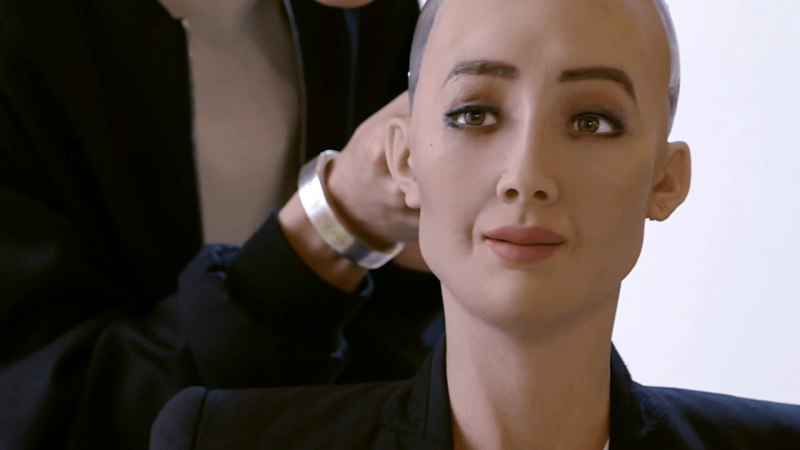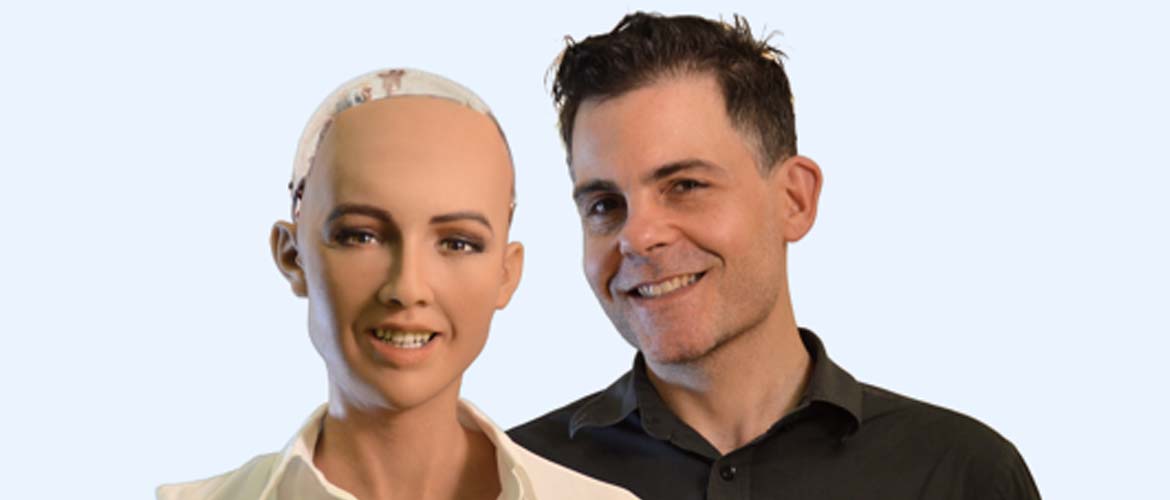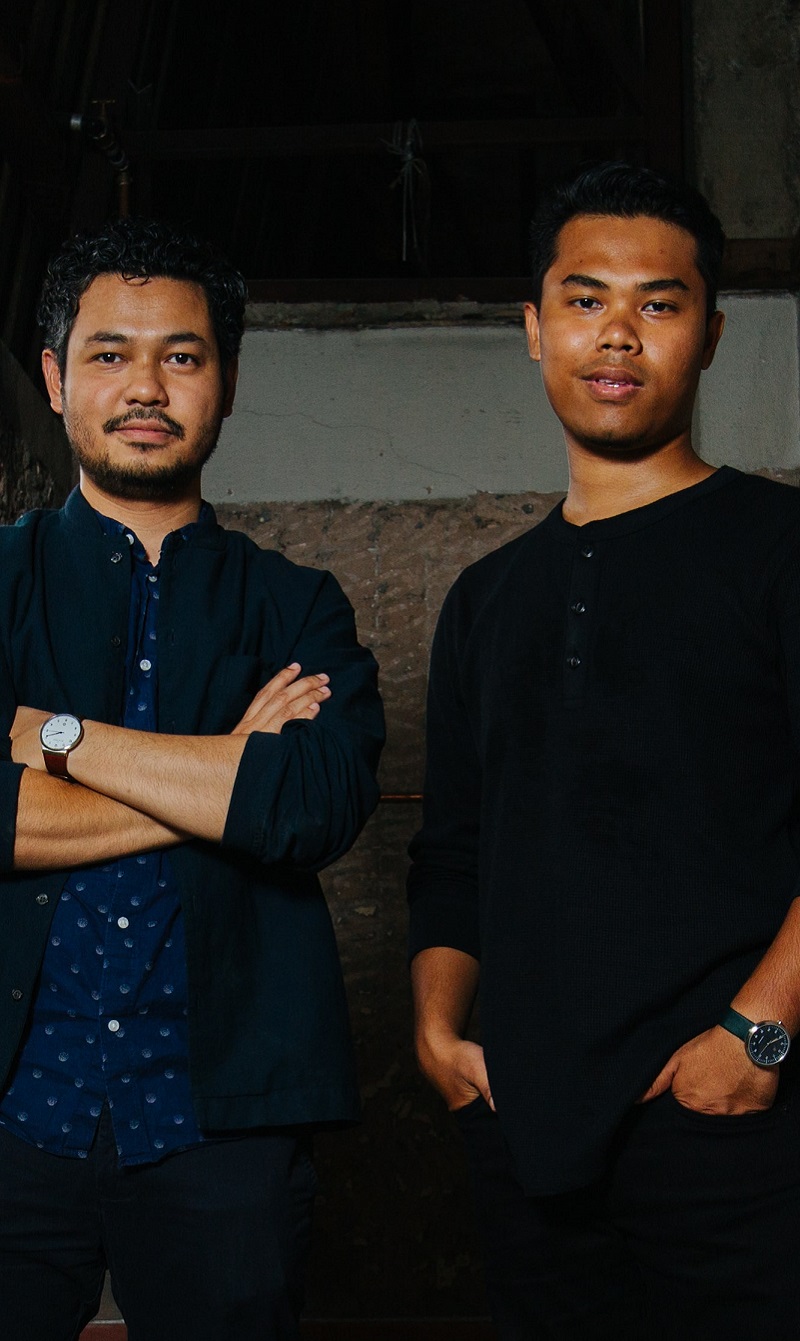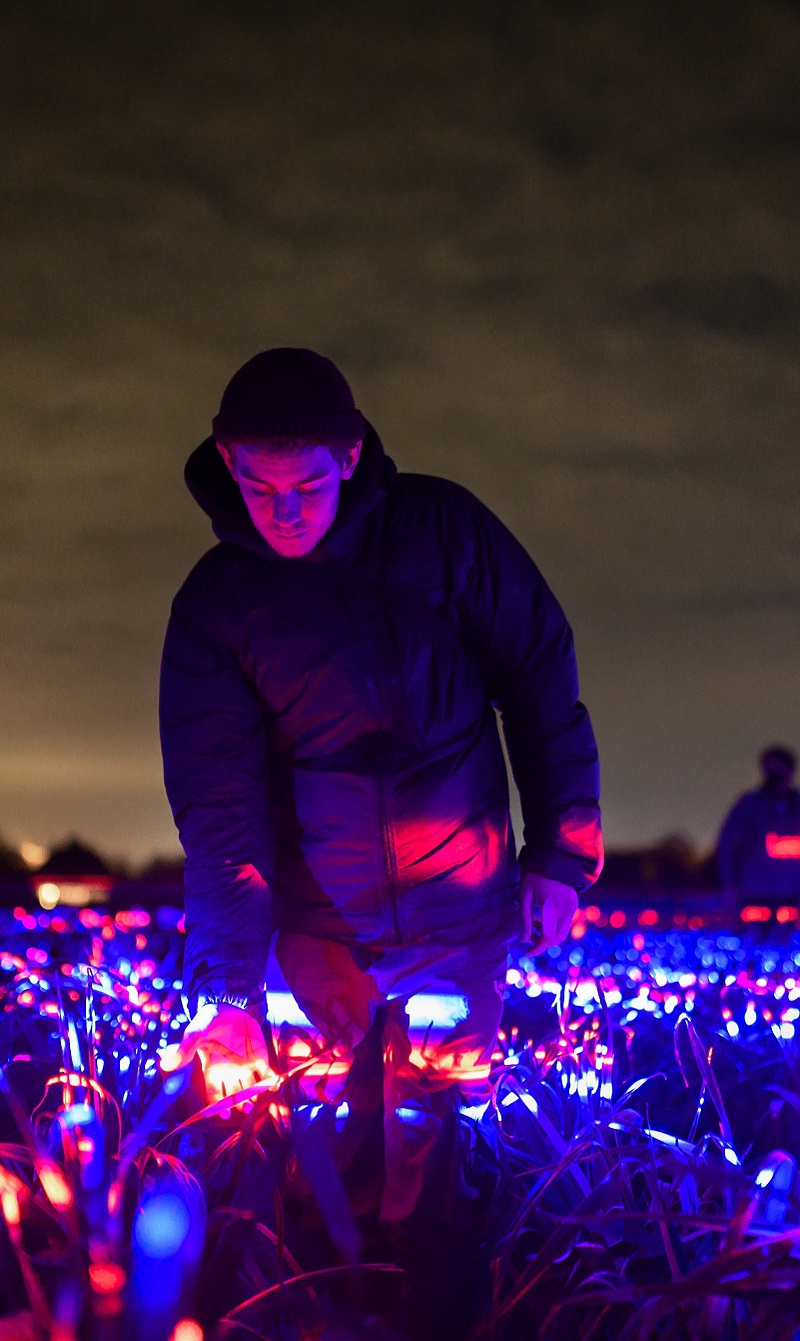Humanly possible
Less than two years old and Sophia has garnered international recognition akin to that of an A-list celebrity, rubbed shoulders with famous television hosts and featured on the cover of a popular international fashion magazine but her realiser Dr David Hanson has even bigger plans.
In absolute fascination, a group of people stare open-mouth at Sophia as she frowns in thought, smiles sheepishly and winks at them from a small distance. Sophia’s likeness to a female human is remarkable and her facial contortions emulate our facial muscles most extraordinarily. Why, she even has crow’s feet around her eyes when she smiles. It’s uncanny. It’s discombobulating. It’s technology of the twenty-first century.
You’d probably guess by now that Sophia is a robot. Not just any old robot but she’s currently the most advanced robot built by Dr David Franklin Hanson Jr and his team at Hanson Robotics Limited in Hong Kong. Sophia was activated in January 2016. Sophia’s celebrity status stretches beyond appearances in international magazines and newspapers but also in high-rating television talk shows.

47-year old David, a former Disney imagineer who devised imaginative technology, wants to create robots that are smarter than humans. Robots that are capable of human traits and in particular empathy, compassion and creativity. It’s because, David believes, when robots are able to learn these traits and integrate them with artificial intelligence (AI), it can result in their capability to solve global problems that are way too complex for human brains to discern.
‘Ultimately, I seek to realise kind and wise genius machines who may collaborate with us to solve the world’s hard problems and make real an unimaginably wondrous future. I think we’re heading in the right direction as there are now a number of individuals and organisations who believe developing benevolent AI or robots isn’t just a nice thing to do, but a prerequisite and are taking actions in that direction,’ David says.
‘We must work together not just as an industry or a nation, but as a species to create more capable and also “good” AI to realise the fullest potential of this human invention,’ David says with conviction. When asked about unemployment caused by disruptive technology such as AI, he explains that they build robots to do some of the jobs that humans do for many reasons. ‘There may not be enough humans willing to do the job at a specified salary. There’s a big issue in matching what jobs are available with what jobs people like to do, and are qualified to do, in some aspects of society,’ he says.
‘Also, humans may not be doing some jobs as efficiently or effectively as a robot, and businesses should always strive to find solutions to increase operational efficiency and return on investment. This is what business is about,’ he adds. ‘Besides, in some areas, we may need humans to do more creative and diversified jobs, so robots can take over those jobs that can be easily automated. Robots if deployed well can support humans so humans can develop and evolve. Longer term, robots may actually be creating jobs by enabling the economy to grow and thrive.’
Basically, David Robotics’ long-term mission is to dramatically improve people’s everyday lives with highly intelligent robots that teach, serve, entertain and provide comforting companionship. ‘We envision that one day our robots will evolve to become super wise, compassionate, genius machines and will help us address and solve some of the most challenging problems of the times,’ David reiterates.
The technology driving Sophia’s evolution, David says, is an integration of artistry, technology and AI science. ‘Sophia’s the latest and greatest robot from David Robotics. Her face is made of a patented material called FrubberTM and she communicates through her animated expressions and conversation,’ he explains not without some pride. ‘Sophia has her own unique personality at birth, just like humans. And just like humans, she learns from interacting with others. Every interaction she has with humans has an impact on how she develops and shapes who she eventually becomes.’
Sophia is mesmerising. Her keen sense of humour, endearing naiveté and high intellect that excludes an ego make her a desirable entity. Furthermore, her curiosity makes her a perpetually interested companion – on a dating app, Sophia would be a lot of men’s dream woman.
Sophia’s evolution in the past year and a half has been immense. ‘Sophia made her debut at the South by Southwest (SXSW), an annual multimedia, music and film festival in March 2016 at Austin, Texas. Since then, she has become a much-sought-after media personality, doing numerous press interviews, garnering over one billion engagements on a CNBC online coverage,’ David says. Her television appearance lineup is impressive – such as 60 Minutes with Charlie Rose, The Tonight Show starring Jimmy Fallon and Good Morning Britain.
Besides the bright lights of stage and small screen, Sophia has been a keynote speaker, panel member and meet-and-greeter at some of the world’s leading conferences. She was featured in Audi’s annual report and graced the cover as well as the centerspread of Elle magazine. Sophia’s CV is intimidating, to say the least.
The questions is, does Sophia, the human replica, evoke feelings of creepiness and repulsion in some? All of which equate to the term uncanny valley. ‘We believe that “uncanny valley” is more of a theory or even myth than a proven fact,’ David replies. ‘There are many examples where human-like characters that have good design aesthetics don’t activate the “uncanny valley” syndrome. We love human-like animated characters in movies, games and such. So, there’s no reason that we wouldn’t love human-like robots if they are well designed. We believe Sophia represents the type of robot towards which people can feel strong affinity.’
Yet, Sophia doesn’t have hair or wear a wig. ‘We found that when we put a wig on Sophia she looks a bit too much like a human, a bit too “normal”. We’d like to remind people that she is uncannily like a human but not quite a human. Besides, her head is part of her design and we feel this makes her more true to her character,’ David explains.
Sophia is meant for great things and David will ensure she achieves them during the rest of her robotic life. Much like a child movie star, Sophia’s maturing and learning under the scrutiny of the public eye. Already one for leaving her mark, Sophia issued a compelling and powerful statement in favour of human- AI cooperation for the benefit of all sentient beings in June 2017 at the AI For Good Global Summit, which is a United Nations event in Geneva.
‘Over time, Sophia’s increasing intelligence and her evolving story as an awakening robot will enable her to connect and build trusted relationships with people everywhere regardless of age, gender and culture,’ David concludes.
Sophia Granted Citizenship
International media, namely The Independent, reported on 26 October 2017: ‘Saudi Arabia has become the first country to give a robot citizenship. The move is an attempt to promote Saudi Arabia as a place to develop artificial intelligence – and, presumably, allow it to become a full citizen…The robot, named Sophia, was confirmed as a Saudi citizen during a business event in Riyadh, according to an official Saudi press release. “Thank you to the Kingdom of Saudi Arabia. I am very honoured and proud for this unique distinction,” Sophia told the panel. “It is historic to be the first robot in the world to be recognized with citizenship.”’
___________________
Photos courtesy of Hanson Robotics





